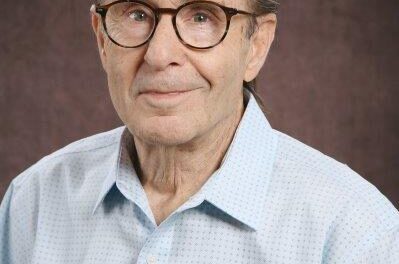We’re moving from the East Bay to the Wine Country, one carload at a time. I promised Rosie I would bring all her possessions and not try to distinguish between the useless stuff and the treasures. With a little help from my friends I’ve filled an 8-foot Pod (a steel storage container we can load in Alameda and get delivered to Kenwood). Then we filled a 12′ Pod. Yesterday I ordered another 8-footer. When the house is sold, I’ll be flush for the first time since the 1980s. “Money changes everything.”
My wife is a hoarder –and I’m not symptom-free. I subscribe to the London Review of Books, Harper’s, the New Yorker, and the Anderson Valley Advertiser (which has more good material week-in, week-out than the NYer). I recently canceled subs to the New York Review of Books and the New Scientist. I typically read one or two articles per publication, and when I’d see other pieces I hoped to read eventually, I would throw them in a Sierra Nevada 24-bottle carton (the perfect size, good-looking, strong, and with handles cut in).
One night in Alameda, trying to be efficient, I triaged the three cartons full of articles I hoped to get to. After about an hour I had cut it down to two cartons. Among the pieces I had saved was “Hoardology,” by Jon Day in the 8 September 22 LRB. I stoped triaging to read it.
Day’s review was of “Possessed,” a history of hoarding by Rebecca Falloff. To better understand the subject he had bought and read “Stuff” by Randy Frost and Gail Steketee, “Clutter” by Jennifer Howard, “The Hoarding Handbook,” “CBT for Hoarding Disorder” a Group Therapy program published bye Wiley, “The Life-Changing Magic of Tidying” by Marie Kondo and “Decluttering at the Speed of Life” by Dana White. He printed out academic articles “in which psychiatrists argued over definitions.” His pile of relevant materials kept growing.
“Pathological hoarding is surprisingly common,” Day reported, “affecting between 2 and 6 per cent of people (with equal numbers of women and men), and surprisingly difficult to define… One solution is the Clutter Image Rating (2008), a diagnostic tool designed by Frost and Steketee to replace vague self-definitions of hoarding with a more objective measure. The CIR consists of images of different interiors – kitchen, bedroom, living room – which are progressively filled with objects.” On the 1-to-10 scale, Day considers himself a level 3 hoarder with a “standard amount of household clutter.” His pegs his parents as level 5 (“hoarding that might require some ‘professional assistance”) and level 7 (“which poses significant safeguarding issues”).
“Hoarding Disorder” was added to the Diagnostic and Statistical Manual of the American Psychiatric Association in 2013 –meaning therapists can get reimbursed for attempting to treat it. Before it got its own designation and number, hoarding had been considered a mere symptom of Obsessive-Compulsive Disorder.
Sigmund Freud (an obvious nut) “had more than three thousand sculptures covering his desk and shelves,” according to Day. “In The Psychopathology of Everyday Life, he describes the way the ‘shortage of space in my study has often forced me to handle a number of pottery and stone antiquities (of which I have a small collection) in the most uncomfortable positions, so that onlookers have expressed anxiety that I should knock something down and break it.’”
Among the points in the piece by Day I’m glad I saved, “A hoard that has been curated can become a collection; a collection that has been labelled becomes an archive (just as a collector is merely a hoarder who has space for his stuff).” And “Half of all hoarders have a close relative who hoards.” Which jibes with my anecdotal evidence.
Meta note
As this piece shows, hoarders get significant positive reenforcement when they come upon and are able to use some object they’d saved that normies would have tossed.




